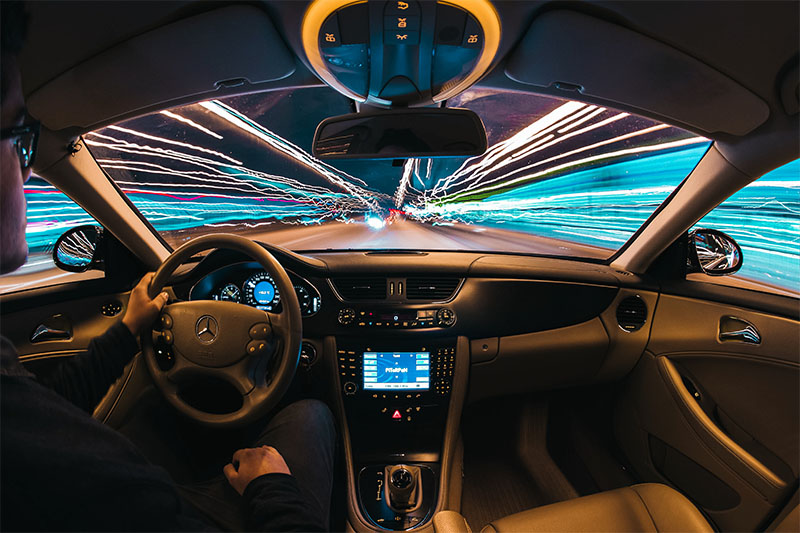
Singapore’s Nanyang Technological University will be working with selected industry partners to integrate cellular communication into vehicle-to-everything (V2X) technologies. This is part of the University’s research into the smart mobility sector.
NTU’s Research Capabilities in V2X
As an intelligent transport system, V2X transmits information between a vehicle and another entity which affects it. Entities might include other vehicles, pedestrians and data centres. In a world where everything becomes increasingly interconnected, improving V2X technologies is pertinent. By harnessing V2X, road safety, ease of traffic flow and energy savings can be championed.
NTU has conducted extensive research in the field. In 2015, the NTU-NXP Smart Mobility Test Bed was launched. This turned the campus into a V2X-enabled one, allowing for research and testing of secure, smart connectivity and mobility solutions. Improvements in traffic flow in cities, road accident prevention and an enhanced user experience for mobility services were the desired outcomes.
Beginning 2019, NTU will be looking into the different vehicular communications technology. These include dedicated short-range communication V2X, existing 4.5G and the latest 5G mobile networks. Through their research, it is hoped that the speed of data transmission and radio coverage distance for communication between vehicles and infrastructure will be improved. Ultimately, the study will expedite the speed at which notifications and warnings are received.
In partnership with various industry players, the University is looking for ways where the aforementioned technologies “synergistically complement” each other and can be used in autonomous vehicle prototypes, traffic infrastructure and unmanned aircraft systems. In doing so, real-time navigation traffic and hazard information can be relayed to vehicles pre-emptively.
Test Drive
Four completed research projects were showcased. They pivot about early warning system for vehicles and cellular communication for personal mobility devices (PMDs).
The early warning system taps on the car’s electronic systems through the onboard diagnostics report. Researchers collect the data from the onboard diagnostics port and analysed it to improve road safety for all, including users of the V2X network.
For example, a single vehicle can alert another approaching vehicle if its doors are opened, or has an engine fault and was disabled along the expressway. Alerts like these are sent out real-time wirelessly using the smart onboard unit. This gives the driver additional reaction time to avoid incidents.
Additionally, by combining Green Wave and Green Light Optimised Speed Advisory system, drivers can gauge how fast or slow they should be going to catch the green wave i.e. when all traffic lights on the route are green. Data is sent from the traffic lights to the driver.
Secondly, in partnership with a private automotive parts company, NTU is working to integrate a V2X smart unit into PMDs. Both drivers and PMD motorists can be alerted if a PMD is in the blind spot of a reversing vehicle, lowering the risk of an accident.
A third showcase is a positioning system which uses V2X radio signal to determine vehicle locations in areas where the GPS is unable to locate satellite signals. Using the onboard unit in the vehicle to communicate with roadside units installed in carparks, the V2X-locate system uses the known locations of the roadside units and the V2X radio signal in a way. Much like a GPS navigator which uses GPS satellite signals, the vehicle is made aware of its location. It boasts a 1 metre accuracy 95% of the time.
Finally, this partnership taps on the industry player’s futuristic 60 Ghz V2X system which download large files in split seconds. The same feat can be accomplished while the vehicle is on the move and within range of the 60 GHz base stations which are installed on lampposts or bus stops. Ultra-fast and real-time high definition streaming and file downloads will soon be possible for intelligent transportation systems. The technology need only be monitored by a central system for wireless downloading of high-definition maps to the autonomous vehicles.
Vice President of Research, NTU, Professor Lam Khin Yong said, “Employing cellular communication and integrating them into existing V2X technologies for mobility can help to reduce travelling time, minimise the risk of serious accidents and optimise road usage for a densely populated urban city like Singapore. The emerging technologies researched today may soon become the norm for our everyday lives, contributing to Singapore’s vision to be a Smart Nation.”
















